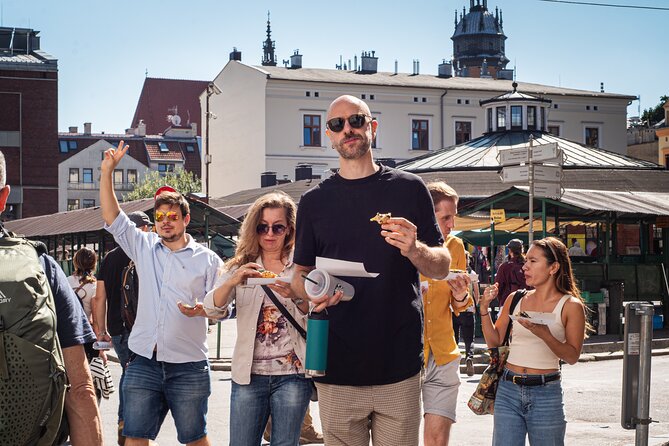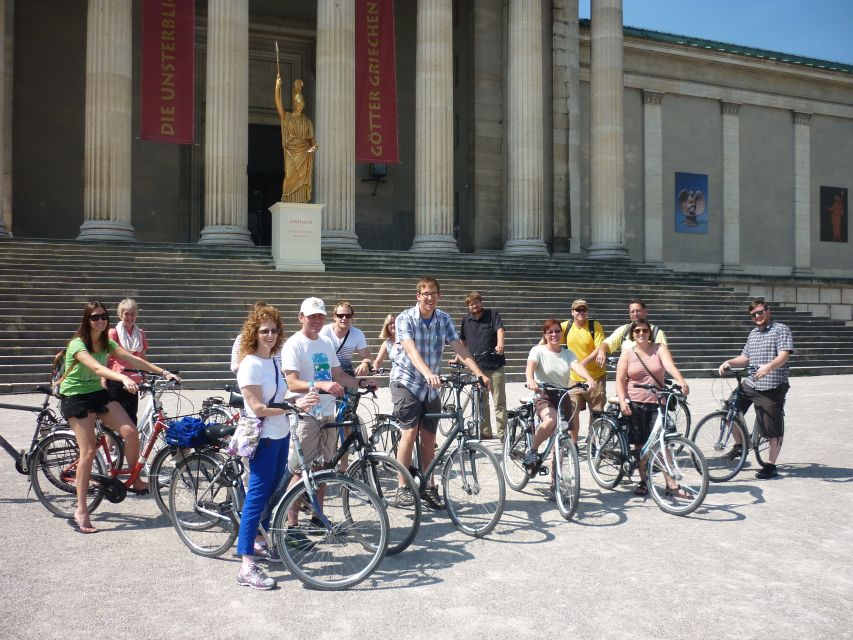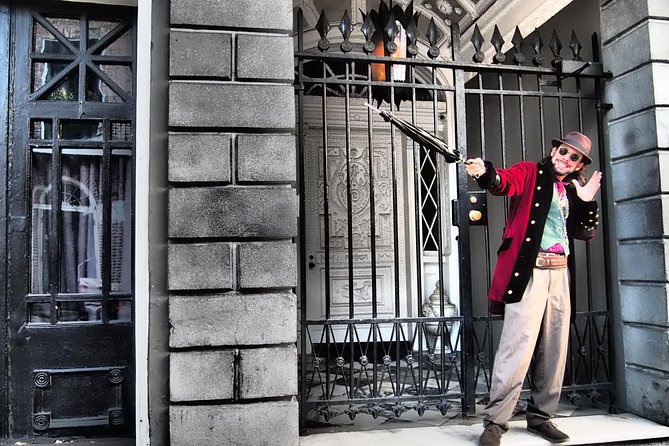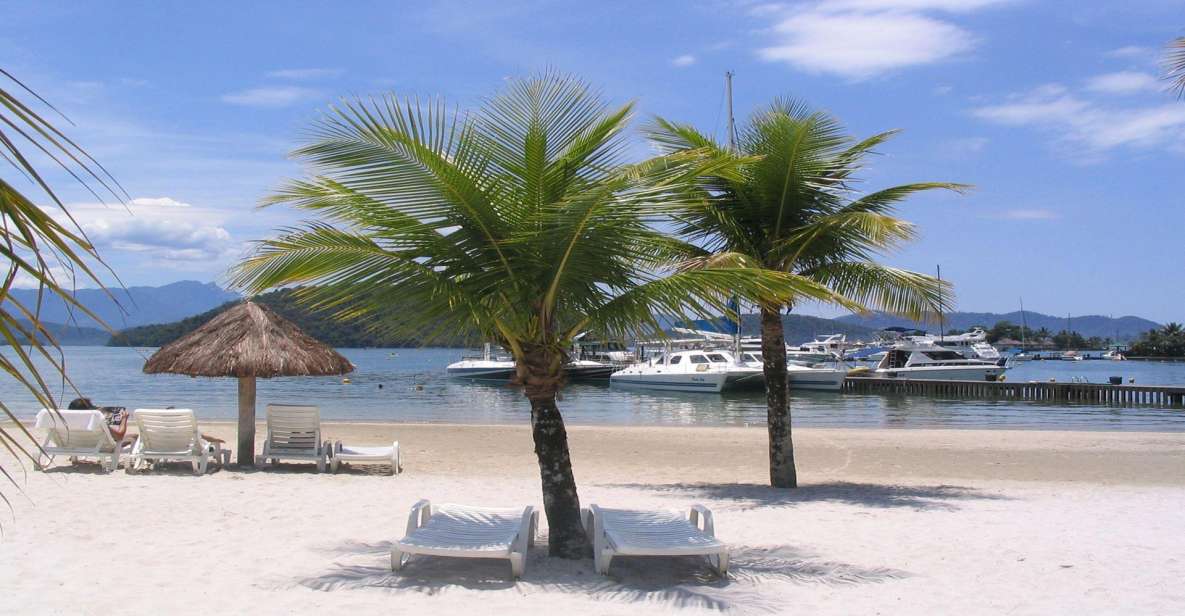Oaxaca’s Day of the Dead celebration is a vibrant blend of ancient Mesoamerican rituals and Catholic influences, transforming the city into a captivating cultural experience. Visitors are immersed in the creation of intricate ‘altars of the dead,’ honoring loved ones through shared communal meals of traditional dishes like mole negro. The reverence for this sacred time is palpable, from solemn candlelit vigils in historic cemeteries to lively parades. But the journey doesn’t end there – connecting with Oaxacan beliefs and personalized protective wooden animals further enriches this transformative exploration of tradition and creativity.
Key Points
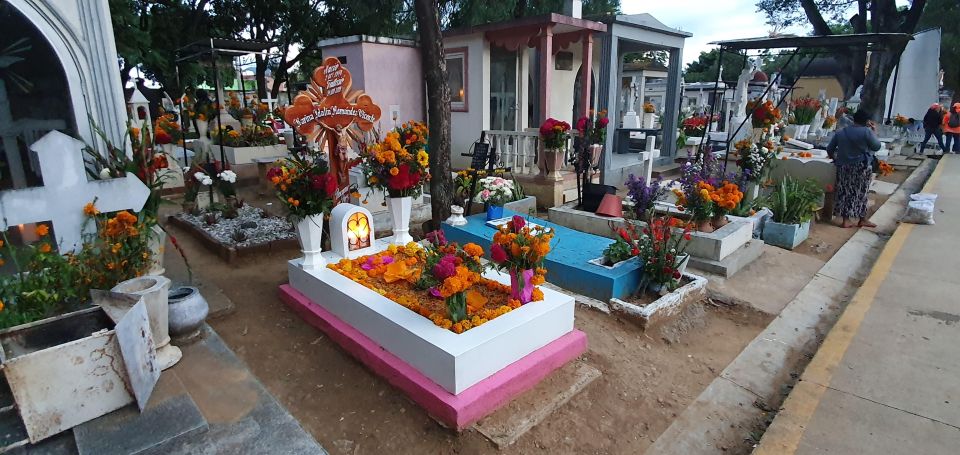
-
Oaxaca’s Day of the Dead celebrations blend ancient Mesoamerican rituals and Catholic influences, creating a vibrant and immersive cultural experience for visitors.
-
Elaborate altars, adorned with photos, favorite foods, and symbolic objects, honor deceased loved ones and connect the living with the departed.
-
Guided altar creation allows visitors to assemble a personal memorial, fostering a profound sense of communion with their ancestors.
-
Traditional Oaxacan cuisine, including mole negro and pan de muerto, is an integral part of the celebrations, nourishing both the body and the spirit.
-
Visits to decorated cemeteries and evening ceremonies immerse participants in the reverence and connection between the living and the dead.
Exploring Oaxaca’s Day of the Dead
Oaxaca’s Day of the Dead celebration is a captivating blend of ancient traditions and personal expression, offering visitors a profound culture.
Vibrant markets burst with an array of marigold flowers, intricate paper cutouts, and an array of traditional sweets and foods, all essential elements in the preparations for this deeply meaningful holiday.
Families meticulously construct elaborate altars, adorning them with photos of deceased loved ones, their favorite foods and drinks, and symbolic objects that reflect their unique personalities and lives.
As night falls, the streets come alive with vibrant parades, lively music, and solemn candlelit vigils at the city’s historic cemeteries, inviting visitors to witness and partake in this sacred celebration of life and death.
Connecting With Local Culture and Beliefs
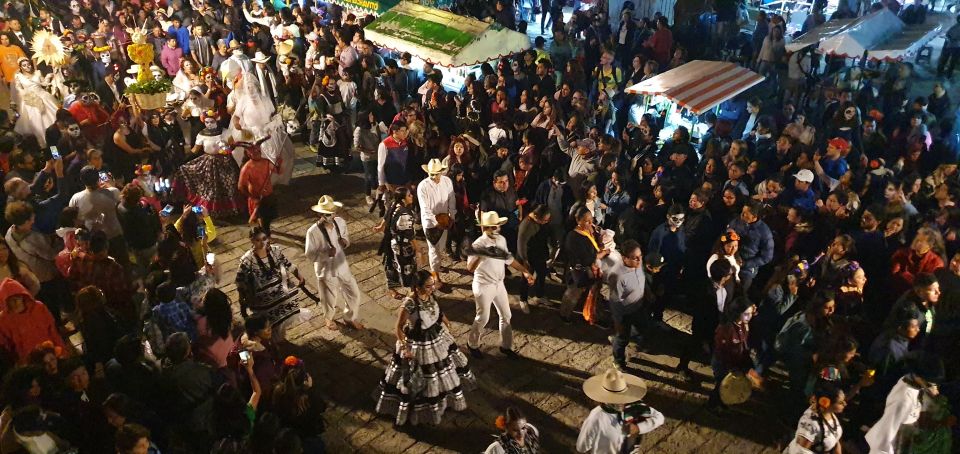
Visitors who embrace Oaxaca’s Day of the Dead festivities don’t just witness the vibrant traditions – they get to understand the profound beliefs and personal meanings behind them.
By participating in the creation of an ‘altar of the dead‘ and learning about the symbolic significance of its elements, travelers gain a deeper connection to the local culture.
They’ll discover the importance of honoring deceased loved ones and how the holiday blends ancient Mesoamerican rituals with Catholic influences.
Exploring cemeteries and observing the moving evening ceremonies allow guests to appreciate the reverence Oaxacans have for this sacred time.
Through these immersive experiences, the celebration’s true essence is revealed, leaving a lasting impact on all who partake.
Assembling a Personal Altar
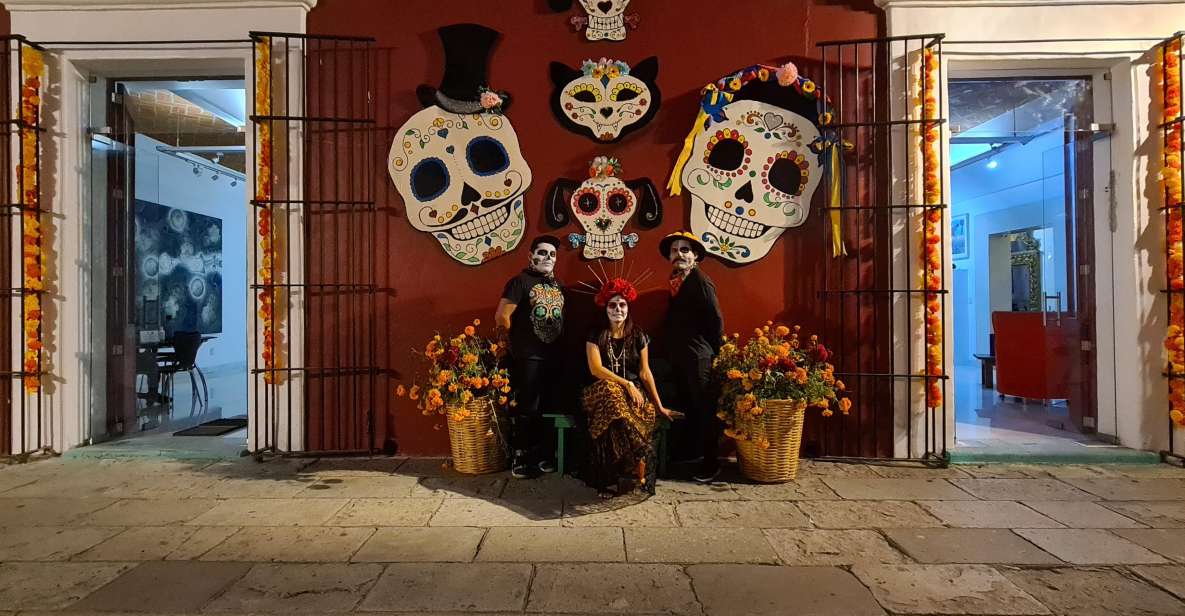
Assembling a personal altar lies at the heart of Oaxaca’s Day of the Dead celebrations, allowing participants to honor and connect with their departed loved ones in a deeply meaningful way.
Guided by local experts, visitors select meaningful objects, photos, and mementos to create their own unique altar.
They might include the deceased’s favorite foods, flowers, candles, and personal items that evoke cherished memories.
The process of carefully curating these elements encourages reflection and facilitates a profound sense of communion with those who’ve passed.
Enjoying a Traditional Meal
After crafting their personal altars, participants come together to enjoy a traditional Oaxacan meal, savoring the flavors that nourish both body and soul during this sacred celebration.
The feast is a vibrant tapestry of local delicacies, each dish imbued with the essence of the region’s rich culinary heritage. Guests might indulge in:
- Mole negro, a complex and deeply flavorful sauce made with chili peppers, spices, and chocolate
- Tamales wrapped in fragrant banana leaves, filled with tender pork and fragrant herbs
- Sweet pan de muerto, a pillowy bread adorned with colorful sugar decorations
- Refreshing pulque, a traditional fermented agave beverage with a unique, slightly tart taste
This communal meal is a cherished ritual, fostering connection and honoring the memories of loved ones.
Visiting Emblematic Cemeteries
Amidst the vibrant celebrations, participants often venture to the city’s emblematic cemeteries, where the boundaries between the living and the dead blur in a spectacle of color, music, and profound reverence.
Visitors walk among the decorated graves, adorning them with bright marigold flowers, candles, and the favorite foods of their departed loved ones.
The air is filled with the scent of copal incense and the melodies of traditional music, as families gather to share stories, reminisce, and honor the memory of those who’ve passed.
It’s a deeply moving experience that connects the community to its ancestral roots and the cyclical nature of life and death.
Witnessing Evening Ceremonies
As the sun dips below the horizon, the cemeteries of Oaxaca come alive with a mesmerizing display of traditions and rituals. Families gather around the graves of their loved ones, lighting candles, placing fresh marigold flowers, and setting out their favorite foods as offerings.
The air is thick with the fragrance of copal incense and the haunting melodies of Mesoamerican music, creating an atmosphere of reverence and connection between the living and the dead.
Onlookers are captivated by the:
- Processions of dancers adorned in vibrant costumes
- Colorful altars adorned with photos, mementos, and sugar skulls
- Vendors selling traditional treats and handcrafted wares
- Heartfelt tributes and personal reflections shared by families
Discovering Tona and Nahual
On November 1st, visitors have the opportunity to discover their Tona andNahual – the Aztec concepts of a personal guardian spirit and a symbolic animal. This profound connection to the natural world is a cherished aspect of Oaxacan Day of the Dead traditions.
Through a guided experience, participants explore the meanings and significance of these spiritual guides. They learn how the Tona and Nahual influence one’s personality, talents, and destiny. This deeply personal discovery is celebrated through thoughtful introspection and the creation of a protective wooden figure.
| Tona | Nahual |
|---|---|
| Personal guardian spirit | Symbolic animal |
| Influences personality | Represents individual destiny |
| Provides spiritual guidance | Offers protection and strength |
| Connects to the natural world | Celebrated through wooden figures |
Painting Your Protective Animal
After discovering their Tona and Nahual, visitors get to celebrate these powerful spiritual guides by painting their own protective wooden animal figure. This hands-on activity allows travelers to connect with the deep symbolism of the Day of the Dead.
Participants can choose from a variety of native animals, each with its own unique meaning and significance:
- Jaguar: a fierce protector
- Hummingbird: a symbol of joy and resilience
- Turtle: a guide for longevity and patience
- Owl: a messenger between the living and the dead
With vibrant paints and careful brushstrokes, visitors bring their wooden animal to life, imbuing it with personal meaning and creating a cherished memento of their Oaxacan adventure.
Frequently Asked Questions
What Are the Health and Mobility Requirements for This Tour?
This tour is not suitable for children under 5, people over 70, pregnant women, or those with mobility impairments. Customers must be able to walk and navigate uneven terrain during the cemetery visits.
How Do I Obtain the Wooden Figure for the Altar?
The wooden figure for the altar is created during the tour on November 1. Customers will discover their Tona and Nahual, then paint a protective animal figure to take home as a cherished memento.
Can I Bring Extra Food or Drinks on the Tour?
You can bring extra food and drinks, but the tour only includes one traditional meal on October 30. While you’re free to enjoy additional items, they’re not covered by the tour price.
How Much Time Is Allocated for Each Activity on the Itinerary?
The tour allocates a flexible schedule, allowing plenty of time for participants to enjoy each activity. On October 30, customers can expect to spend several hours exploring markets and crafting their personal altar. Cemetery visits on October 31 are the focal point of the day.
Is There an Option to Customize the Personal Altar Creation?
Yes, the itinerary allows guests to personally customize their altar during the ‘assemble a personal altar’ activity on October 30th. This hands-on experience lets participants incorporate meaningful mementos and elements that reflect their own traditions and beliefs.
Recap
Oaxaca’s Day of the Dead celebration is a truly immersive cultural experience.
Visitors will connect with ancient Mesoamerican rituals, Catholic influences, and local beliefs, crafting personalized protective wooden animals and honoring loved ones through traditional meals and solemn candlelit vigils.
It’s a transformative journey that immerses one in the vibrant blend of Oaxacan heritage, tradition, and creativity.

